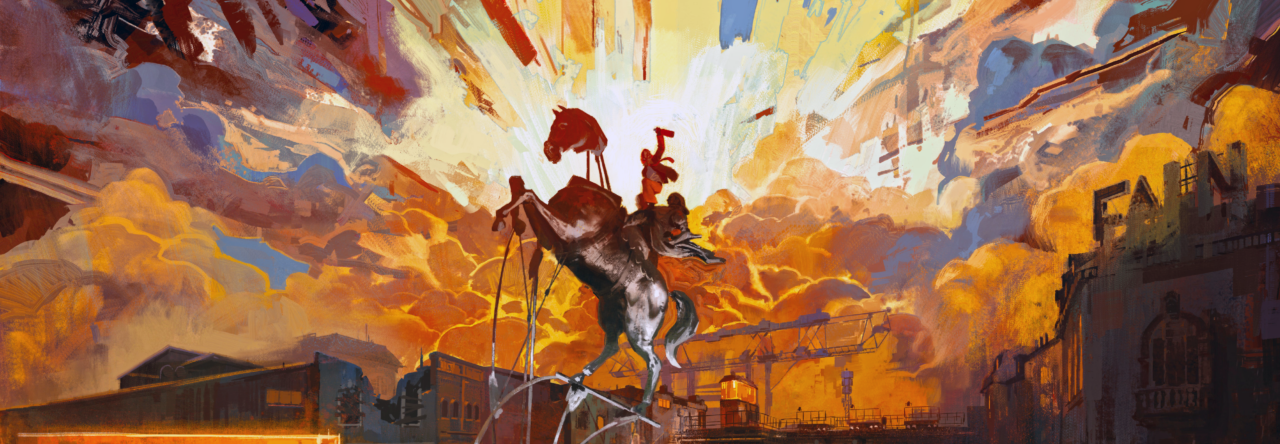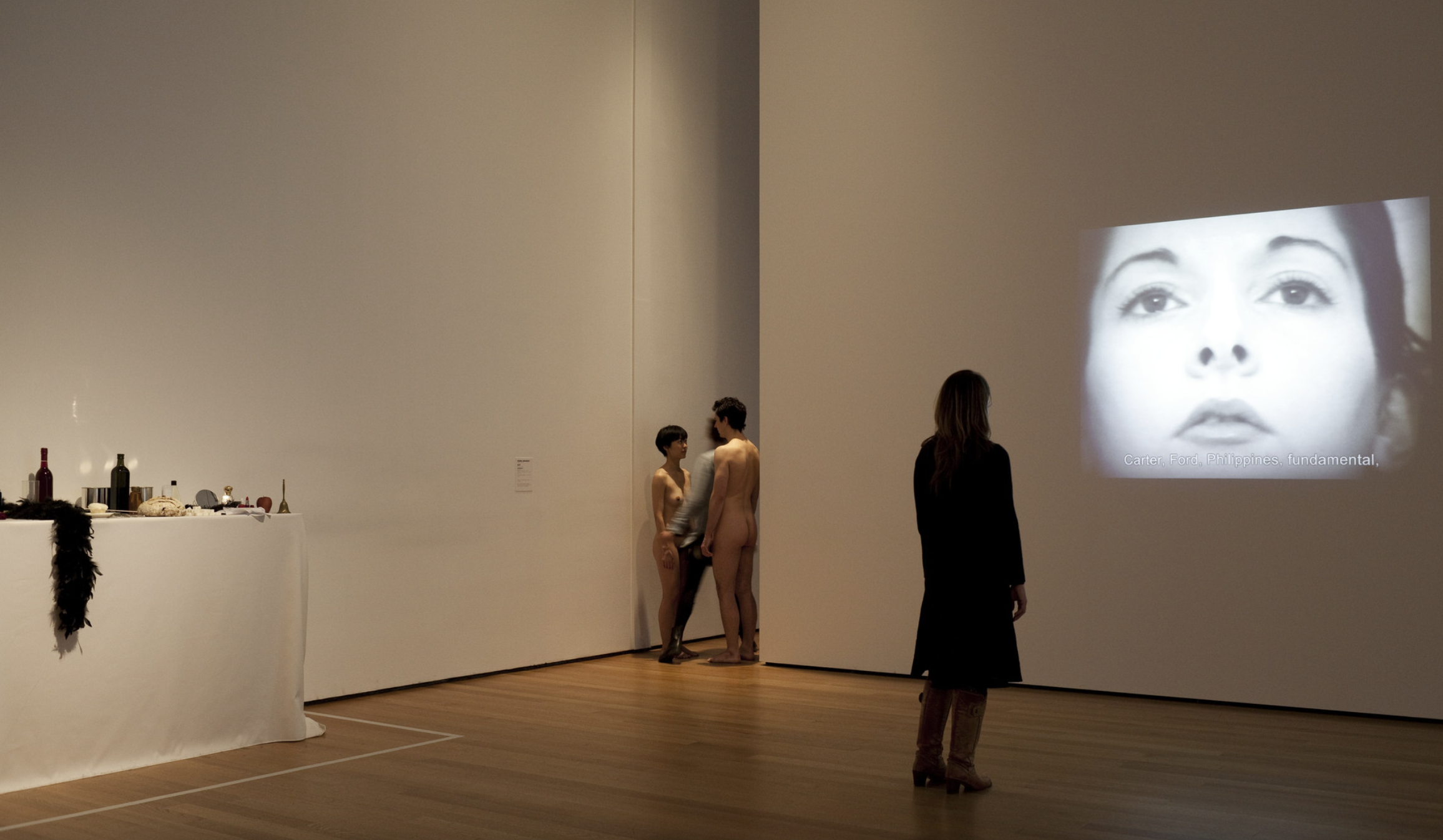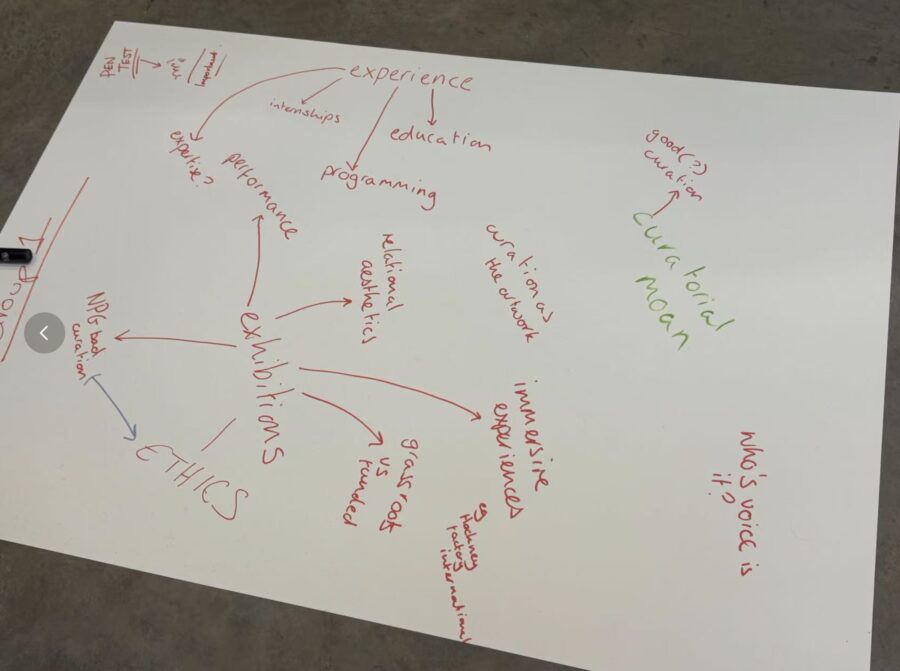About Knowledge
This week, through a workshop led by James Clegg (curator at Talbot Rice Gallery), we experienced the challenge of planning an exhibition. The session also included a lecture on Curatorial Ethics delivered by Gabi. Overall, the learning content focused on two major themes: curatorial decision-making under fast-paced practice, and the ethical framework behind curatorial work.
James’ workshop was really interesting — he asked us to quickly devise an exhibition plan, considering goals, budget, venue layout, and promotional strategy all in one go. This kind of fast-paced exercise made me realize that curating is not just about “thinking slowly”; it is also a form of decision-making training, about making the best choices under limited resources. Meanwhile, in Gabi’s lecture on curatorial ethics, I was introduced more systematically for the first time to Jean-Paul Martinon’s concept of Curating as Ethics and Maura Reilly’s call for Curatorial Activism. Curating is not merely about organizing exhibitions; it also means responding consciously to social and political environments.
About the Discussion
One thing that struck me deeply in the class discussion was the idea that “curating is not an irresponsible choice.”
I used to think that as long as the artworks were good and the exhibitions looked nice, that would be enough. But through this week’s learning, I started to reflect on questions like:
-
Who are we ignoring or prioritizing during the curatorial process?
-
Are we unconsciously reinforcing certain structures of cultural power?
-
Are there hidden injustices in the use of public resources?
About Our Group
In the end, our group was named 11:11, which I think is a pretty nice name — probably. But I still want to record here in my blog the group name I had secretly thought of (not because I didn’t have the courage to say it out loud at the time, but because I genuinely cracked myself up with it).
My group name proposal was: F-artworld.
After all, we are all in the artworld, and F could stand for many things: Fictional, Fantastic, Feminist, Free, Fine… but together with “artworld” it would spell Fartworld* ! Of course, I would never have seriously proposed such a vulgar name in public — but it felt too funny not to immortalize it somewhere, like here in my blog.
About My Project
This week, I had my first relatively practical imagination of what my Individual Curatorial Project could look like. James’ workshop really gave me a reminder.
I decided to abandon my previous idea of a “two-person room” concept, because the legal risks and operational difficulties were too high, and it carried an unavoidable manipulative aspect. Although some argue that curating should present conflict and discomfort rather than smoothing them over (Rogoff, 2008), I felt that this project would have too much potential to cause harm to participants, which doesn’t align with what I hope to achieve.
I want to take a more feasible, more conservative curatorial approach.
Right now, I am thinking about curating an exhibition related to video games. They are naturally interactive — I could simply place the machines there and let visitors play. But I still want to maintain a critical perspective: video games don’t always bring pure joy; their development is also tied to negative expressions, unhealthy mechanisms, and extreme ideologies.
Budget is a concern. But I feel that listing out a budget won’t be too difficult. Many vintage consoles are still available on eBay, and maybe rental could even be an option?
—–
Reference
-
Rogoff, I. (2008). Turning. In P. O’Neill & M. Wilson (Eds.), Curating and the Educational Turn (pp. 88-92). Open Editions.


